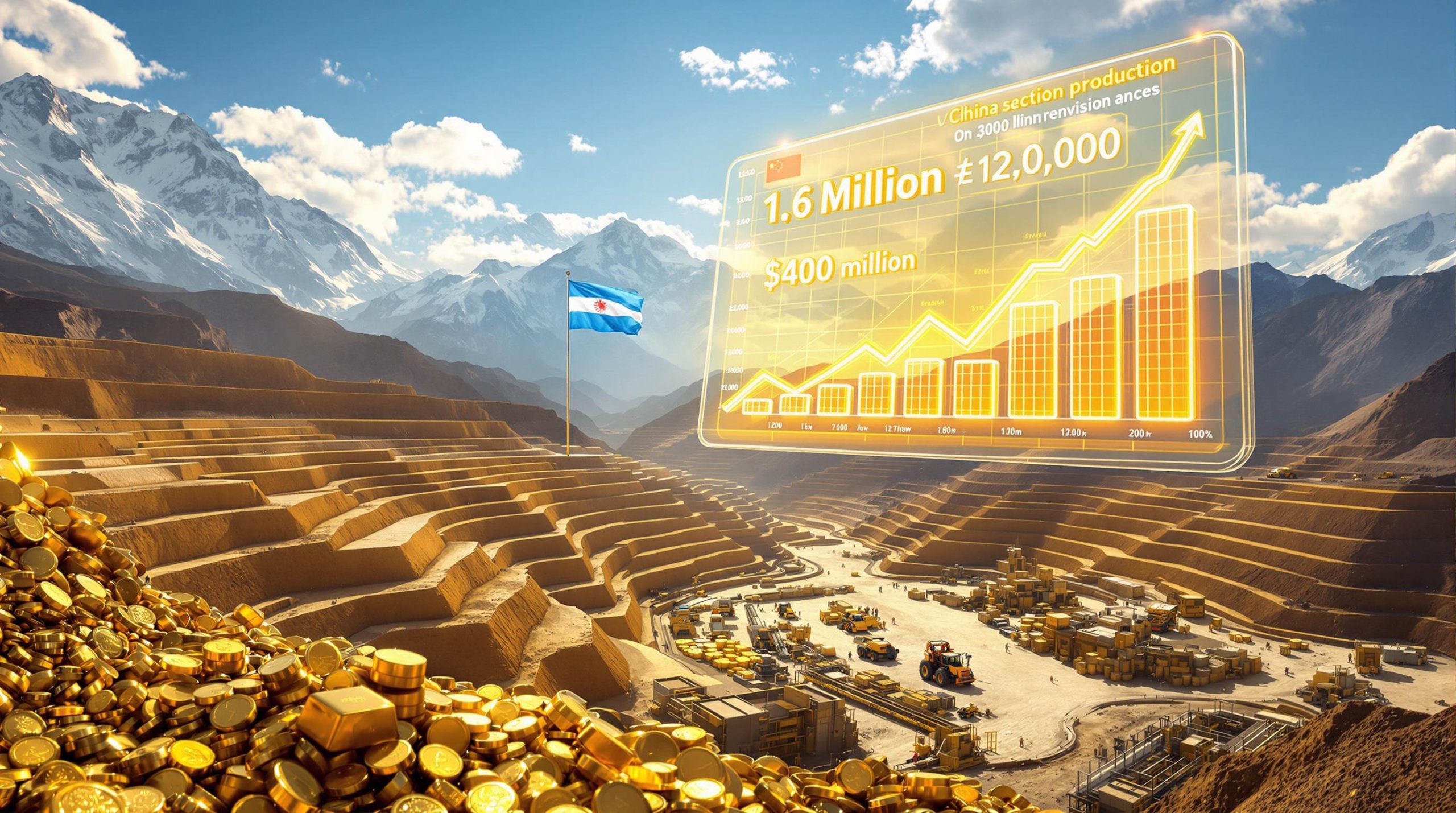How Are US-China Relations Impacted by Middle East Conflicts?
The geopolitical chessboard of US-China relations has experienced significant tremors following recent US military actions in the Middle East. On June 21, 2025, US President Donald Trump authorized air strikes on Iran, dramatically reshaping global strategic priorities and potentially granting China unexpected advantages in their ongoing competition.
The Geopolitical Ripple Effect of US Military Actions
US military engagements in the Middle East create a strategic diversion that fundamentally alters the balance of power in the Indo-Pacific region. As Xu Weijun, Assistant Research Fellow at South China University of Technology's Institute of Public Policy, notes:
"An intensifying situation [in the Middle East] would force the US to allocate more strategic resources there, leaving fewer resources available for competition with China in the Indo-Pacific, thereby easing pressure."
This dynamic creates a predictable pattern: as US military assets, diplomatic bandwidth, and strategic focus shift toward immediate Middle Eastern challenges, China gains valuable breathing room to strengthen its position across Asia without direct confrontation.
Historical parallels reinforce this pattern. During the height of US involvement in Afghanistan and Iraq (2003-2011), China significantly expanded its influence in the South China Sea, establishing artificial islands and military installations while US attention was diverted elsewhere. The current escalation appears to be creating similar opportunities.
Recent reports indicate that Iran has threatened to close the Strait of Hormuz—through which approximately 20% of global oil traffic passes—forcing the US to redeploy naval assets from Asian waters. This redeployment creates strategic vacuums that China can exploit to strengthen its regional position.
Strategic Resource Competition in Times of Global Instability
Beyond the immediate military implications, Middle East conflicts dramatically intensify competition for critical resources. The US faces heightened vulnerability in securing essential supply chains—particularly for rare earth elements—at precisely the moment when military demands make these materials most crucial.
Xu Weijun observes that "as tensions escalate in the Middle East, Washington's urgency to secure [rare earth] resources is likely to grow, giving Beijing more leverage at the negotiating table." This urgency transforms what might otherwise be straightforward trade negotiations into high-stakes national security imperatives.
The historical pattern is clear: during periods of military conflict, nations become acutely sensitive to resource dependencies. The current Middle East crisis has already triggered panic buying of certain critical minerals, with US defense contractors reportedly accelerating procurement timelines for rare earth elements used in precision guidance systems and communications equipment.
Perhaps most significantly, these resource pressures create asymmetric negotiating leverage. China, as the dominant supplier of materials the US military desperately needs, gains disproportionate influence in broader strategic and economic discussions between the two powers.
Why Are Rare Earth Elements Central to US-China Strategic Competition?
Rare earth elements (REEs) represent the hidden foundation of both modern military supremacy and technological innovation. Despite their name, most rare earths aren't actually rare in the Earth's crust—but economically viable concentrations and processing capabilities are exceedingly scarce.
Critical Applications of Rare Earth Elements
These 17 elements on the periodic table (including neodymium, dysprosium, samarium, and europium) possess unique magnetic, luminescent, and electrochemical properties that make them irreplaceable in advanced technologies:
Defense Applications:
- Samarium-cobalt magnets in F-35 fighter jet engines and radar systems
- Neodymium in missile guidance systems and precision weaponry
- Europium in Javelin missile targeting systems
- Terbium in sonar equipment and night vision devices
Clean Energy Technologies:
- Dysprosium and neodymium in electric vehicle motors (Tesla, GM)
- Terbium in wind turbine generators
- Lanthanum in hydrogen storage systems
- Cerium in catalytic converters and emissions reduction
Consumer Technologies:
- Neodymium in smartphone speakers and vibration motors
- Europium in LED displays and phosphors
- Yttrium in laser technologies and communications equipment
The Pentagon has identified rare earths as "mission critical" materials—without them, modern military operations would be impossible. As Xu Weijun accurately states, rare earths are "critical to modern technology and defence industries—and arguably a strategic vulnerability for the United States."
China's Dominant Position in Rare Earth Supply Chains
China's rare earth dominance represents one of the most successful long-term strategic resource policies in modern history. Through decades of deliberate investment and policy support, China has established an overwhelming position:
- Controls approximately 60% of global rare earth mining
- Dominates 85% of global processing capacity
- Supplies 80% of US rare earth imports
- Maintains the world's most advanced rare earth separation facilities
- Possesses unmatched technical expertise in complex processing
This dominance didn't happen by accident. China's leadership recognized rare earths as strategically valuable decades ago, with Deng Xiaoping famously declaring in 1992: "The Middle East has oil, China has rare earths." The country developed policies specifically designed to capture the entire value chain, from mining to final products.
China's strategic advantage extends beyond raw production numbers. The country has built integrated industrial ecosystems where rare earth processing, manufacturing, and innovation occur in close proximity, creating efficiencies that other countries struggle to match. This integrated approach gives Chinese companies significant cost advantages while also enabling tighter government control over the supply chain.
What Leverage Does China Hold in Rare Earth Negotiations?
China's rare earth dominance translates into significant geopolitical leverage—a fact that becomes increasingly relevant during periods of international tension.
Negotiating Power Dynamics in Resource Diplomacy
China possesses multiple mechanisms to exert influence through rare earth supply chains:
Export Controls: China's Ministry of Commerce adjusts export quotas based on strategic priorities. In 2023, quota reductions of 30% triggered global price increases of approximately 40%. These controls operate within a carefully calibrated framework that remains technically compliant with WTO regulations while creating strategic pressure.
Licensing Restrictions: By limiting export licenses or imposing additional administrative requirements, China can create targeted supply disruptions without announcing formal embargoes. Following recent US military actions, reports indicate that rare earth shipments to specific US defense contractors experienced delays due to "customs inspection requirements."
Quality Control Mechanisms: China has occasionally cited environmental or quality control concerns to reject shipments, creating unpredictable supply interruptions that disproportionately impact foreign manufacturers with just-in-time inventory systems.
Processing Bottlenecks: With 85% of global processing capacity, China can create supply constraints by adjusting domestic processing outputs even when raw materials remain available elsewhere.
This leverage is particularly potent because the development of alternative supply chains requires years, not months. Even with aggressive investment, establishing competitive rare earth separation facilities takes 3-5 years at minimum, creating a significant vulnerability window.
Historical Precedents of Rare Earth Diplomacy
China has demonstrated its willingness to use rare earth leverage during international disputes. The most notable example occurred in 2010 during tensions with Japan over the Senkaku/Diaoyu Islands. Following the detention of a Chinese fishing boat captain, China temporarily halted rare earth exports to Japan, causing prices to spike by approximately 600% and triggering an international supply crisis.
While China officially denied implementing a targeted embargo, rare earth shipments to Japanese manufacturers were delayed or reduced through various administrative mechanisms. This crisis prompted Japan to pursue aggressive supply diversification, investing in Australia's Lynas Corporation and accelerating recycling initiatives.
More recently, following US semiconductor export restrictions targeting China, industry analysts reported subtle shifts in rare earth export patterns that seemed calibrated to signal displeasure without triggering formal WTO complaints.
"China could implement export quotas, licensing restrictions, or processing limitations to create supply uncertainties," notes Xu Weijun, highlighting the range of tools available to Chinese policymakers.
How Might Middle East Conflicts Reshape US Resource Security Strategy?
The intersection of Middle East conflicts and rare earth dependencies creates an urgent strategic challenge for US policymakers.
Vulnerability Assessment of US Critical Mineral Supply Chains
The US currently faces significant vulnerabilities in its rare earth supply chain:
Domestic Production Limitations:
- Mountain Pass mine in California produces approximately 15% of US rare earth needs
- Lack of domestic processing facilities means even US-mined materials must be sent to China
- Environmental permitting challenges slow development of new mining operations
- Technical expertise gap after decades of outsourcing
Strategic Stockpile Inadequacy:
- Current US rare earth reserves cover less than six months of defense needs
- Defense Production Act Title III funding has accelerated stockpiling but remains insufficient
- Strategic materials reserve primarily designed for short conflicts, not prolonged competition
Substitution Challenges:
- Neodymium magnets have no practical substitute for high-performance military applications
- Alternative technologies typically offer 30-40% lower performance
- Material substitution requires redesign and recertification of weapons systems
The convergence of Middle East conflicts with US‑China trade war dramatically intensifies these vulnerabilities. As military operations accelerate, demand for precision-guided munitions, communications equipment, and other rare earth-dependent technologies increases precisely when supply chains face maximum pressure.
Strategic Options for Reducing Rare Earth Dependencies
The US is pursuing multiple parallel strategies to address rare earth vulnerabilities:
Domestic Revival Initiatives:
- MP Materials expansion of Mountain Pass mine with targeted production of 20,000 tons annually
- Defense Production Act funding for processing facility construction (target completion: 2027)
- USGS surveys identifying new potential domestic deposits in Wyoming, Texas, and Alaska
International Partnerships:
- "Mineral NATO" initiative with Australia, Canada, and European allies
- Financing support for Lynas Corporation's processing facilities
- Strategic agreements with Vietnam and Malawi for access to alternative supplies
Recycling and Recovery:
- Urban mining initiatives extracting rare earths from electronic waste
- Current recovery rates approximately 15% but improving with new technologies
- DoD-funded research into enhanced extraction methods
Material Efficiency:
- Redesigned military technologies reducing rare earth content
- Thrifting techniques that optimize material usage while maintaining performance
- Stockpile prioritization frameworks to ensure critical systems receive available materials
These initiatives face significant challenges in timeline and scale. Even with accelerated development, establishing robust alternative supply chains requires 5-10 years of concentrated effort—creating a critical vulnerability window during which China maintains significant leverage.
What Are the Economic Implications of Rare Earth Trade Tensions?
The economic consequences of rare earth supply uncertainty extend far beyond military applications, potentially affecting broad segments of the global economy.
Market Responses to Supply Uncertainty
Rare earth markets demonstrate predictable patterns during periods of geopolitical tension:
Price Volatility:
- The Rare Earth Price Index (REPI) surged 25% in the week following US strikes on Iran
- Speculative buying amplifies price movements beyond fundamental supply-demand dynamics
- Smaller manufacturers face disproportionate impacts due to lower purchasing power
Industry Adaptation:
- Major corporations accelerate stockpiling during tension periods
- Toyota secured 10-year contracts with Vietnamese miners for dysprosium in 2024
- Tesla shifted to reduced-rare-earth motor designs in 2024, cutting dependency by 20%
Investment Patterns:
- Venture capital funding for rare earth alternatives doubled between 2023-2025
- Australian and Canadian mining companies saw share price increases of 15-30% post-US strikes
- Chinese processing companies experienced similar valuation increases
These market dynamics create cascading effects throughout supply chains. When rare earth prices spike, manufacturers face difficult choices between absorbing costs, passing them to consumers, or redesigning products—often resulting in production delays, price increases, or both.
Industrial Policy Shifts in Response to Resource Competition
Governments worldwide are reconsidering industrial policies in response to rare earth vulnerabilities:
Manufacturing Reshoring:
- Evaluation of entire supply chains rather than just final assembly
- Tax incentives for domestic production of rare earth-dependent components
- Critical minerals energy transition policies prioritizing domestic supply chains
Public-Private Partnerships:
- Government loan guarantees for processing facility construction
- Long-term purchase agreements providing market certainty for new producers
- Research funding for alternative materials and recycling technologies
National Security Integration:
- Supply chain risk assessments becoming mandatory for defense contractors
- Expanded definition of "critical infrastructure" to include material processing
- International coordination on stockpile management
These policy shifts represent significant departures from the globalization models that dominated previous decades. Rather than pursuing maximum efficiency through global supply chains, both the US and its allies are increasingly prioritizing security and resilience—even at higher economic costs.
How Are Global Trade Negotiations Affected by Resource Security Concerns?
The intersection of rare earth dependencies and geopolitical competition is reshaping the landscape of international trade negotiations.
Evolving Trade Talk Dynamics Between US and China
US-China relations and rare earth negotiations have experienced significant shifts following the escalation of Middle East tensions:
Changing Priorities:
- Rare earth access has moved from a secondary to primary negotiation focus
- US negotiators reportedly offering concessions in other areas to secure supply stability
- China linking rare earth access to US semiconductor export control policies
Negotiation Leverage:
- As Xu Weijun observes, "Middle East tensions could push [trade] negotiations forward due to US urgency"
- Post-strike reports indicate US offered tariff reductions on medical devices in exchange for rare earth stability
- Time pressure asymmetry favors China as US military operations accelerate material demands
Potential Compromise Areas:
- Selective easing of technology transfer restrictions
- Coordinated export licensing frameworks
- Joint standards development for critical minerals order implementation
The fundamental dynamic creates both challenges and opportunities. While increased US urgency strengthens China's negotiating position, it also elevates the importance of finding workable compromises rather than prolonged standoffs.
Multilateral Implications for Global Trade Frameworks
The rare earth issue extends beyond bilateral US-China relations to impact broader international trade frameworks:
WTO Considerations:
- Increasing tension between national security exceptions and free trade principles
- Precedent-setting cases regarding resource export restrictions
- Potential reforms to address critical mineral trade governance
Regional Trade Bloc Responses:
- EU raw materials facility establishing European acquisition priorities
- RCEP provisions potentially facilitating Asian rare earth supply chains
- USMCA coordination on North American resource development
Emerging International Norms:
- Debate over legitimate vs. coercive resource leverage
- Transparency requirements for export quotas and restrictions
- Environmental and labor standards in critical mineral production
These developments suggest a fundamental shift in how critical resources are governed in international trade. The post-WWII liberal trade order assumed that economic interdependence would naturally moderate political conflicts—an assumption increasingly challenged by strategic resource competition.
FAQ: US-China Relations and Rare Earth Elements
What makes rare earth elements strategically important?
Rare earth elements possess unique magnetic, luminescent, and electrochemical properties that make them irreplaceable in advanced military systems, clean energy technologies, and consumer electronics. Despite their name, most rare earths aren't geologically scarce—the challenge lies in economically viable concentrations and environmentally responsible processing. Their strategic importance stems from their irreplaceability in defense applications like precision-guided munitions, radar systems, and communications equipment, combined with China's dominance of global mining landscape.
Could the US develop alternative sources of rare earth elements?
The US has potential domestic rare earth deposits, particularly in California, Wyoming, and Alaska, but faces significant challenges in developing competitive mining and processing capabilities. These challenges include:
- Environmental permitting processes that typically take 7-10 years
- Technical expertise gaps after decades of outsourcing
- High capital costs for processing facilities ($100-500 million)
- Competition with heavily subsidized Chinese operations
While progress is occurring through initiatives like MP Materials' Mountain Pass expansion and partnerships with allies like Australia's Lynas Corporation, complete supply independence would likely require 5-10 years of concentrated effort and billions in investment.
How might China leverage its rare earth position during international tensions?
China has multiple mechanisms to create strategic pressure through rare earth supply chains:
- Export quotas adjusted to create artificial scarcity
- Licensing delays that disrupt supply without formal embargoes
- Quality control rejections targeting specific industries or companies
- Price signals through state-affiliated producers
Rather than implementing comprehensive embargoes that would violate WTO rules, China typically employs subtler approaches that maintain plausible deniability while creating targeted pressure. The 2010 incident with Japan—where rare earth shipments were delayed during a territorial dispute—provides the clearest historical example of this approach, according to analysis from Reuters.
What alternatives exist to Chinese rare earth supplies?
Emerging alternatives to Chinese rare earth dominance include:
- Mines in Australia (Mount Weld), United States (Mountain Pass), and Malaysia
- Processing facilities under development in Texas and Estonia
- Recycling technologies recovering rare earths from electronic waste and industrial byproducts
- Synthetic substitutes for certain applications (though often with performance trade-offs)
- Redesigned technologies that require fewer critical minerals
Each alternative faces economic, technical, or scaling challenges. Recycling currently recovers only about 15% of rare earths from end-
Want to Stay Ahead of Major Mineral Discoveries?
Discover potentially transformative ASX mineral announcements in real-time with Discovery Alert's proprietary Discovery IQ model, turning complex mineral data into actionable investment insights. Explore how historic discoveries have generated substantial returns by visiting the dedicated discoveries page and begin your 30-day free trial today.




